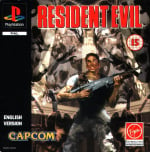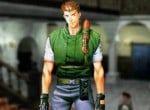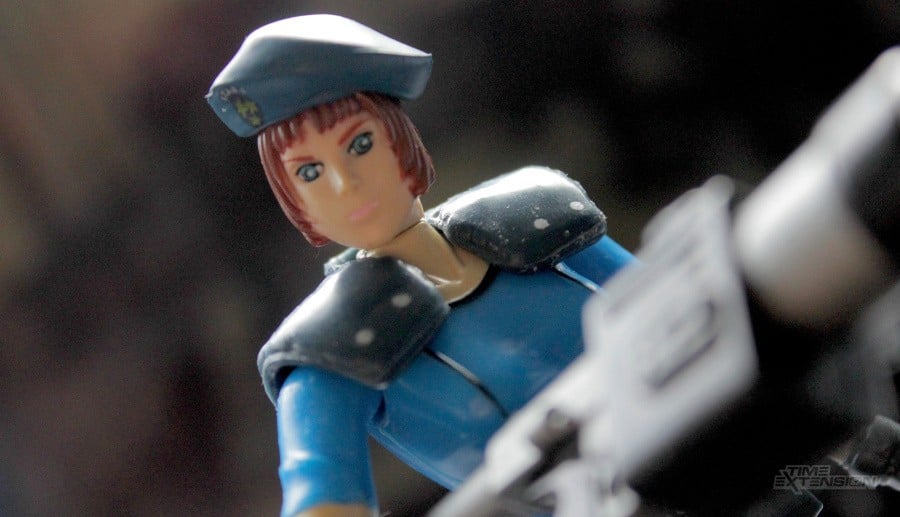
If you walk down the aisles of most toy stores today, you'll likely find no shortage of action figures based on video games: from toys modelled after characters from Fortnite, Minecraft, and Five Nights at Freddy's to other perennial favourites like Mario & Sonic. But this wasn't always the case.
Throughout the early '90s, most toy manufacturers had yet to capitalize on the explosive popularity of video games, believing the market for video game toys to be a niche that wasn't worth investing in. As a result, finding toys based on your favourite gaming characters could often be an impossible task, with the only exceptions being figures based on games that had already made the jump to another medium like film or TV, like Hasbro's GI-Joe-esque Street Fighter II figures and Playmate's Earthworm Jim series.
All of this started to change fairly abruptly, however, in the latter half of 1997, when a couple of toy manufacturers — namely the New York-based Toybiz and the Ohio-based Resaurus — started to release their own action figures based on popular characters from gaming, in the hopes of tapping into the underexploited category. This ended up demonstrating that there was, in fact, a healthy market for video game toys, after all, and convinced other companies like McFarlane Toys (which had previously described video game action figures as a "narrow niche... that really doesn't make a lot of money") to follow suit with their own video game figures within the next two years.
Out of all these companies that were around at the time, Toy Biz is perhaps the one whose history is most interesting to me, in part due to its 'Video Game Superstars' line.

This was a line of toys that didn't just focus on a single game, but instead spanned multiple titles ranging from Tomb Raider, to Resident Evil, to Darkstalkers, Marvel vs. Capcom, The Legend of Zelda, Mario Kart 64, and Diddy Kong Racing. Having grown up seeing these toys in video game magazines, and on store shelves, I've always been curious to learn more about how this line came together, and what it was like dealing with some of the licenses involved, but could never find much information about it online. So I tracked down Jesse Falcon, one of the creators of the line at Toybiz, as well as several other people who were involved in the development of the toys, to try and put together a detailed history of the now iconic figures, for others like me who also happen to remember the line.
"I got hired by Toy Biz in 1994," Falcon told me. "I had interned at Marvel in '91 and the guys at Marvel said, 'Look, we would love to hire you but we want you to finish college.' So I went back after I had finished college and by the time I came back to New York, the comic book bubble had popped a little bit and they had a lot of layoffs and one of the things that I had been doing since I was a kid was customizing toys.
"So I was living in New York City and one of my friends was like, 'Hey, you know what? We heard about a job at Marvel's sister company Toy Biz. So, I walked into that interview and the job was for the assistant to the creative director and I set up all these custom action figures and the guy from Toybiz walked in — he didn't shake my hand — and he looked at all these things. He asked me 'Did you make these?', 'Did you make these yourself?', and then he told me, 'You're hired.'"
At the time, Toy Biz was a moderately-sized manufacturer of action figures and was partially owned by Marvel Entertainment Group, Inc, which allowed it to create toys based on comic book characters like Spiderman and X-Men. Because of this, Falcon's first set of jobs for the company were to make new toys for the company's X-Men line, which he inevitably loved being a huge fan of comic books growing up.
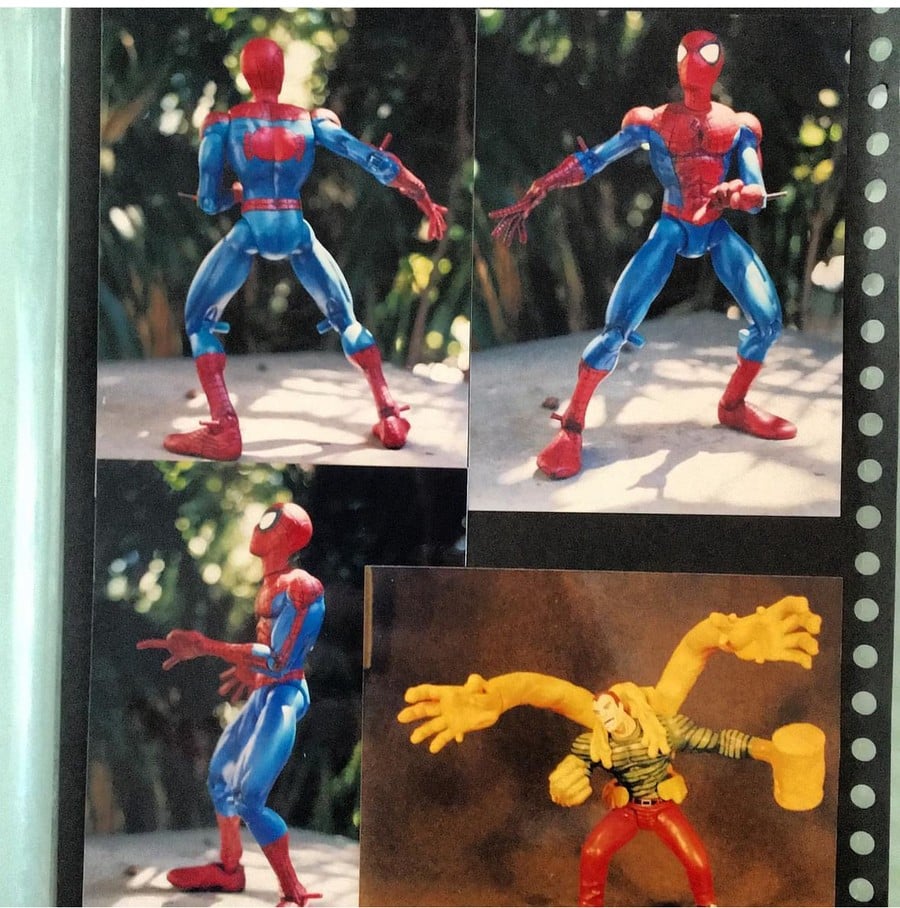
In the back of his head, however, he already had big dreams of starting his own toy line. And he believed he had the perfect concept to help him realise this goal — a line of toys based on some of the most popular names in gaming.
"The year before joining Toy Biz, I was working in Buffalo, New York trying to save money to go to New York City," said Falcon. "And one of the jobs I had was unloading the 18-wheelers at Toys "R" Us at Christmas time. And so I was looking at all the things in the store and they had like this Toys "R" Us news flyer. It basically said something like this was the first year that the aisle of Toys "R" Us had made more money on video games in the United States than was made selling movie tickets, which was obviously a big threshold moment for games. So that was in the back of my mind: wouldn't it be cool to make some video game figures?
"But then, sometime later, I had also met this lawyer, a guy named Keith Boesky, and he became the US head of Eidos — the company that does Lara Croft — roughly two or three years after that. So we had this contact and it gave me the opportunity to say, 'Hey, we should do a Lara Croft action figure.'"
Falcon wasn't satisfied with simply making Tomb Raider figures, seeing the potential to expand the line to include other games, so together with other creatives at Toybiz he came up with Video Game Superstars — a series that wouldn't just be tied to a single license.
Of course, looking back now, it's pretty easy to see why Falcon thought Lara Croft would be the perfect figure to launch Toy Biz's Video Game Superstars line.
Following the release of Tomb Raider across Sega Saturn, Sony PlayStation, and PC in 1996, the Lara Croft character had quickly become one of the biggest names in gaming, with work on a sequel already being in development for a November 1997 release date. In addition to that, Eidos had a keen interest in licensing out the character, with the publisher hoping that these merchandising opportunities would further increase the game's profile and improve the chances of a potential film or TV series further down the line.
"The Toy Biz deal was actually one that I did with Keith," Sutton Trout, a former marketing employee at Eidos, said. "And we did it really quickly because what was happening was we had a huge hit with the first game and we were trying to generate as much buzz and as much sort of reach for that property because we were shopping the character basically for movies and TV."
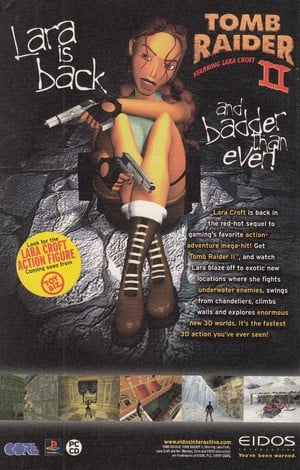
On account of this rush, Eidos wanted Toy Biz to produce on an extremely tight schedule, with the idea being that it would be released to coincide with the launch of Tomb Raider II, prior to Christmas. Because of this, the quality of the figure wasn't exactly the best, with the toy having to be made out of recycled parts of existing Toy Biz products that were simply repainted.
Falcon recalled, "Toy manufacturing typically takes about 12 months to do from start to finish. You have to draw it, design it, sculpt it, get it steel cut, and tool it up. But we had less than that before Eidos wanted it out. So what we ended up doing was we had already done a female X-Men character, which was a new character from the comics, and we said, 'How can we turn her into Lara Croft?'. And we did that really quickly, because we had to get this thing out the door."
In the end, this figure ended up being a major disappointment for fans of the character, and was unsurprisingly criticised by the toy magazine Toyfare, who later dubbed it "one of the most reviled action figures of the last year". Surprisingly, though, the hatred for the figure didn't have an impact on sales, with toy selling out and proving to Falcon's bosses that there was something to these video game toys.
In the aftermath of the Lara Croft controversy, Toybiz tried to cut another deal with Eidos to produce a proper figure, but Eidos ended up going in a different direction, partnering with one of Toybiz's rivals Playmates Toys instead (perhaps to distance itself from its previous effort). Toybiz, on the other hand, went in search of other video game licenses, eventually making a deal with the Japanese developer and publisher Capcom to produce a line of figures based on X-Men vs. Street Fighter.
By that point in time, Capcom had already famously collaborated with the toy manufacturer Hasbro to release a series of G.I. Joe figures based on characters from Street Fighter II, and was pretty much done with the toy market. However, thanks to the efforts of an external licensing agent at Entertainment Licensing Associates Ltd., named Marc Mostman, it not only came around on the idea of producing new toys, but also made the all-important connection with Toybiz.
"Capcom was probably one of ELA's biggest clients," Mostman told me. "I was a gamer, I was a nerd, and I loved all that stuff, so I wanted to see if we could make some action figures. But my boss just said at the time, 'Hasbro already did it' and 'Toybiz will never see you'. So I ended up going out to Toy Fair, which was this big event in New York at the time in February, and I wanted to pitch Toy Biz on making some figures based on X-Men vs. Street Fighter, because the X-Men vs. Street Fighter arcade game had been very successful, and there was a home version coming out."
"What I did was I got a couple of Toy Biz figures and I repainted the Wolverine so he'd be in this game colours and I created a Ryu from an Angel figure by popping off his wings, painting on a headband and giving him a gi. I photocopied the box cover for the X -Men vs. Street Fighter game, I laminated it, put it on cardboard. I got a bubble, and I made this Wolverine vs. Ryu figure that looked like it could sit on the shelves — well, maybe not that good, but it was pretty good."
Armed with these figures in hand, Mostman told me that he approached one of the higher-ups at Toybiz, who was also in attendance at the event, managing to finagle himself a meeting to discuss the figures at a later date. This then led to a more in-depth meeting with Toy Biz, where Mostman, Falcon, and other creatives tried to figure out how they would approach the line.
"I went to the meeting with Toy Biz. and we sat down and we hammered out the terms of the deal, but we also talked about the creative. Like, how would we do it? What's the idea? And of course, at that meeting was Jesse Falcon, who I'm still friendly with to this day; Damon Nee, who is now at Mattel. He's got a big job at Mattel; and a third guy, named Carlos Lopez, was one of the other creatives. So we're sitting down to talk about the creative vision for this line. And this is where they were coming up with the future plans for Video Game Superstars."
Reflecting on these early discussions with Capcom, Falcon recalled, "We ended up getting involved with Capcom because that was already something that Marvel was doing, with X-Men vs. Street Fighter. So it was the lowest lift for us. After the Tomb Raider figure, all the retailers came back to us and said, 'We want more' so the people that I worked for started going, 'This guy isn't just a dumb comic nerd. He's also a dumb video game nerd.' So we started exploring what other video game titles would be worth doing, and Capcom seemed like the perfect partner."
At this meeting, Mostman would not only sign a licensing deal for X-Men vs. Street Fighter on behalf of Capcom, but would also reveal that he could help Toy Biz secure other Capcom licenses. This included the popular survival horror series Resident Evil. For Capcom, these figures would represent an opportunity to erase the disappointment that fans had felt when it had originally released its G.I. Joe figures, whereas for Toy Biz, it would also serve a similar purpose, hoping to make the criticism of its Tomb Raider figure a thing of the past.
The first set of X-Men vs. Street Fighter line officially hit store shelves in early 1998, and included a collection of two-packs featuring Ryu vs. Magneto, Wolverine vs. Akuma, Ken vs. Sabretooth and Cyclops vs. M. Bison. A second wave would then follow later that same year, containing more characters such as Cammie, Rogue, Chun-Li, Apocalypse, Dhalsim, Juggernaut, Zangief and Gambit.
The first Resident Evil wave, on the other hand, dropped in April 1998, and focused on Chris Redfield (with Cerberus), Jill Valentine (with Web Spinner), the Hunter and Chimera, the Lab Zombie and Forrest Spires, and Tyrant, with subsequent waves scheduled for the future based on characters from Resident Evil 2.
"What Toy Biz would do in the beginning is they would submit concepts of the characters drawn by these Marvel-style artists," said Mostman. "So it sort of took these anime-style drawings that Capcom had provided and made it more sort of what they call toy-etic.
"So, in the case of Resident Evil, there was like the spider that was oversized and it would explode when you push the button, or the Doberman that would pop open when you shot it with a projectile. They would have to sort of translate that into a concept art. And that's what would be submitted to Capcom for approval. And that was basically so Capcom understood that it wasn't gonna look exactly like in the game, but it was gonna be a toy that hopefully represented their characters."
A bunch of talented artists would end up working on these lines, with Phil Ramirez being one of the main contributors, alongside individuals like Steve Kiwus and Tim Bruckner. As Ramirez told me on a video call, his role, once he was presented with the approved artwork, was to translate it into three-dimensional prototype, and for this, he typically tried to stick as closely to the designs as possible, only occasionally using some external references, to help with the detailing.
In the case of Resident Evil, this apparently included using old dermatology books and a "fucking scary" mummified cat that he had bought at a curiosity shop, which served as an influence on the Cerberus figure. With all this gore, it was probably unsurprising that the Resident Evil line would end up generating some controversy, with a couple of the toys ending up on the now infamous Warped Toys list — an annual list that a Reverend named Christopher Rose in Connecticut put together, which sought to condemn what it deemed violent and sexually-suggestive toys.
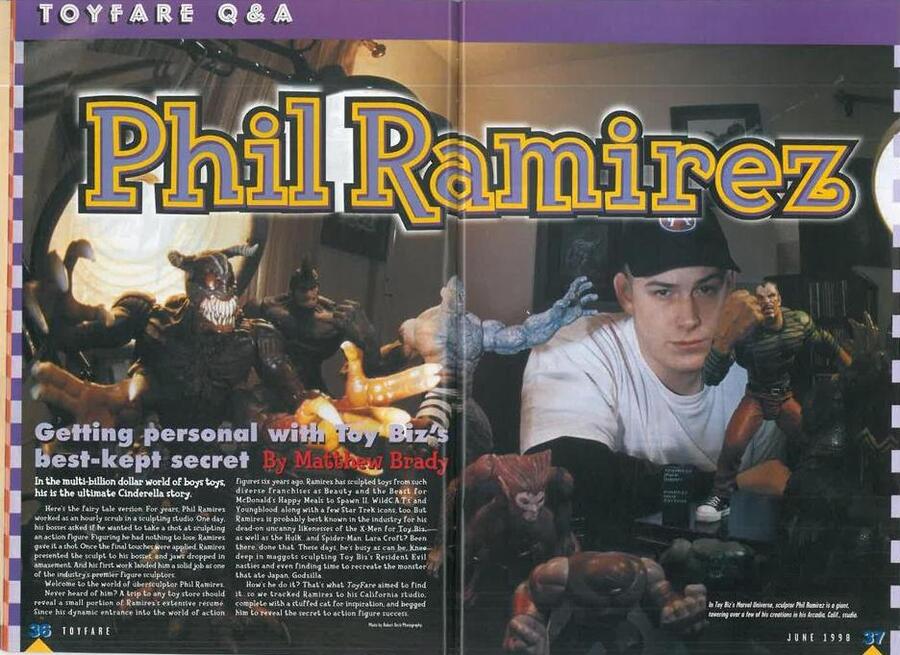
In 1999, for instance, Rose selected the Resident Evil 2-inspired Police Zombie & Claire Redfield figures as number 6 on its list of "Warped Toys", criticising its graphic gore, and depictions of "mutilation", which it found unsuitable for kids. Then, a couple of years later, in 2001, he ended up featuring the Sherry/William set at number three, calling the toy "perverse" due to a description on the back of the box that stated the mutated William was seeking out suitable subjects for implantation of the G-Virus and that Sherry was the "perfect specimen". This was something that led the news website the Hartford Courant to report at the time that the toy was "borderline promoting incest", something which its creators argue comes from a place of intolerance.
Reflecting on this controversy now, Falcon said, "There was a thing that happened in the 80s in the United States. They refer to it now as the Satanic Panic. And there were a lot of super right-wing, evangelical people that would look at toys like Dungeons and Dragons or He-Man and the Masters of the Universe, and say, 'This is satanic.' And honestly, it's one of those things where it's like you've got some person screaming about something, and it was a great thing for people to latch onto because they always punched down.
"So you'd get somebody ganging up and overwhelming someone who really can't possibly defend themselves and toys were a great target. So there was a lot of that stuff going on and I think that that guy from Connecticut was kind of like a remnant of the satanic panic because like he would put this list out every year. He probably went to like a discount place and those things were sitting on the shelf and didn't get sold — who knows how he saw it."
Following their release, the X-Men Vs Street Fighter and Resident Evil toys would go on to be a success for both companies, leading Toybiz and Capcom to collaborate on more figures, including some based on Marvel vs. Street Fighter: Clash of Superheroes and Darkstalkers 3 to coincide with Marvel Vs Street Fighter's Dreamcast port and the arcade release of Vampire Savior (which the third Darkstalkers game would eventually be released as). With the toy line now starting to find its feet, its next move was to expand the series even further by adding more developers/publishers to the mix, and, to do this, it approached arguably the most famous video game company of all: Nintendo.
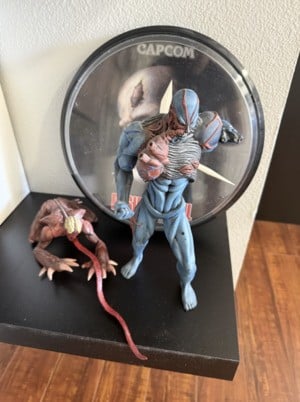
At the time, Nintendo was a few years removed from the release of the Nintendo 64 and had published a bunch of critically acclaimed titles, such as The Legend Of Zelda: Ocarina of Time and Mario Kart 64. As a result, it made perfect sense for Toybiz to want to be the company to release figures based on these titles, with the assumption being that there would be a huge pre-existing fanbase ready to snap up whatever was released.
Falcon told me, "We came knocking and we were like we're doing this range of different video games and we showed them Marvel vs. Capcom and all these other things and we said, 'We want to do Mario Kart and Zelda figures they were like 'Great, how much money are we talking about?'
"I think what helped us was that there had already been a Super Mario Saturday morning TV show, there was already a cereal, and there was all kinds of other kind of Mario or Nintendo merchandise that you could buy. So they were already in the business of business. They were there to make money. It wasn't like, 'Oh, who are you? What's the quality of your product?'"
Following this deal, Toybiz launched a number of figures based on Nintendo games like Mario Kart 64, Diddy Kong Racing, and The Legend of Zelda: Ocarina of Time throughout 1999 to 2000, giving fans of the Japanese developer and publisher an opportunity to own some of their favourite characters as action figures. Out of all these, the Zelda ones apparently proved the hardest to get right, but fortunately, the sculptor Phil Ramirez was once again on hand to offer a lift with some of the more complicated characters
Falcon said, "I remember getting a lot of notes on the Zelda figures [during the concept phase], but overall, Nintendo was great to work with. Phil would always get first round approvals. I remember the project managers at the time would always be like, 'How did you get this approved first round?' Because that just doesn't happen in the toy industry."
Ramirez, meanwhile, reflected on the experience of working on the toys, by telling me the following, "I have boxes and boxes of prototypes. So I have Mario and Yoshi. That's probably the first one of the first Marios ever sculpted in America. I still have that and it's decently on model. When they came out, I actually asked for a box. Like they sent me a product box. So I have like two sets in there. And then I have the first shots too. I only have them all here now because I love that line. That was one of my favorite lines.
"At the time, Jesse just went on a tear and bought them all and he spent a grip of money doing it," he continued, "He called me one night and said, 'Can you believe we got away with this?' Now it's like everybody's doing it. But Jesse had the foresight to bring it to them and say, 'Hey, look this is what's gonna happen.' And it did. And geez, now I think the biggest money being made right now from Jakks is like all the Mario stuff. They have the master Nintendo license."
When the 2 years was up, we ended up getting WCW (World Championship Wrestling) from 4Kids Entertainment, which was massive for us, so we were off to the next thing. It was like fashion industry.
With the line eventually becoming popular, you may be wondering reading this what exactly happened to Video Game Superstars and why it didn't continue into the early 2000s. Well, according to those I spoke to, it was simply a casualty of the often cutthroat and capricious nature of the toy industry, with the manufacturer abandoning the series to focus on the world of wrestling instead.
"Typically, it was limited to a 2-year deal for most of these things," said Falcon. "And so when the 2 years was up, we ended up getting WCW (World Championship Wrestling) from 4Kids Entertainment, which was massive for us, so we were off to the next thing. It was like fashion industry: 'What are we doing this season?'. 'Well, we did video games last season, now we're doing wrestling.'"
Today, he is now the director of merchandising at Marvel Entertainment, under Disney, and is credited as one of the creators of the incredibly popular Marvel Legends series.
As for some of the other names that appeared in this article, Phil Ramirez is still a freelancer in the toy industry, working as a sculptor and project manager on an ever-increasing range of toy lines, while Sutton Trout is a strategic advisor and game consultant for several companies. Marc Mostman, meanwhile, has continued to help various other developers to merchandise their most popular games, putting together deals for a large number of video game toy lines.
"After the Toy Biz deal ended, I ended up selling Street Fighter again to Resaurus and then to Sota Toys," Mostman told me. "And then, after that, I left ELA and then started my own agency where my first client was Capcom. Later on, I then worked with Randy Falk at NECA to put together Player Select, which was NECA's video game character line. It was basically their version of Video Game Superstars.
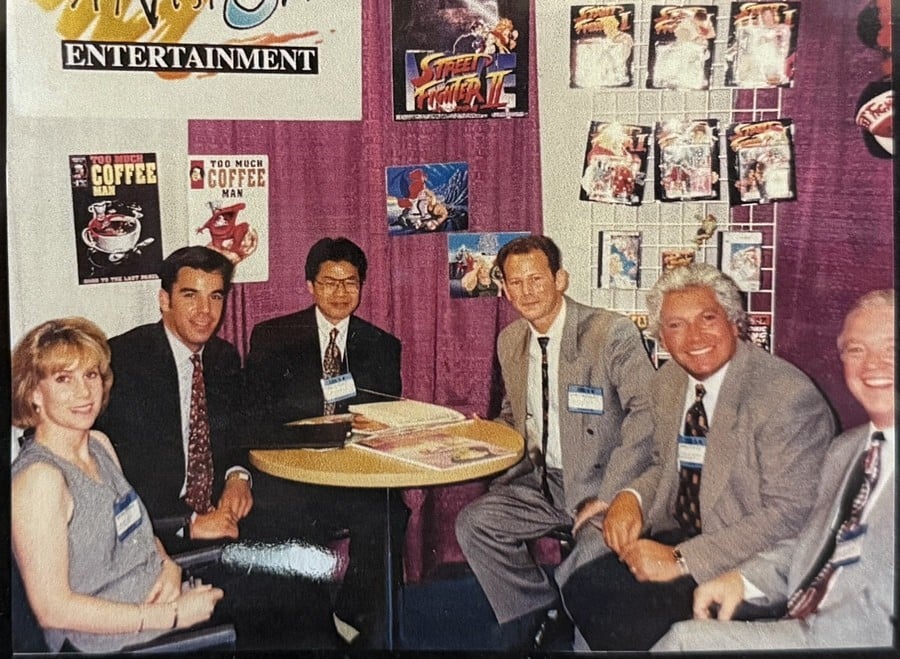
"What I ended up doing there was I went out and represented properties and essentially brought them into NECA to extend their video game licensing. So, in addition to Street Fighter and Resident Evil, I went out and brought them Tomb Raider, Hitman, Legacy of Kain, God of War, and Assassin's Creed. And the last video game property that I represented was Five Nights at Freddy's."
Looking at the above, it's clear that Video Game Superstars represented an important turning point when it came to the popularity of video game toys but it would perhaps be simplifying matters to say it was the sole cause of this explosion. Mostman, for instance, attributed this change also to video game companies finally starting to take licensing more seriously, establishing their own internal departments, as opposed to relying exclusively on external agents taking an interest.
This was something that was extraordinarily rare back when he started out, with most companies focusing on games first and foremost, and considering anything else to be an unnecessary distraction.

